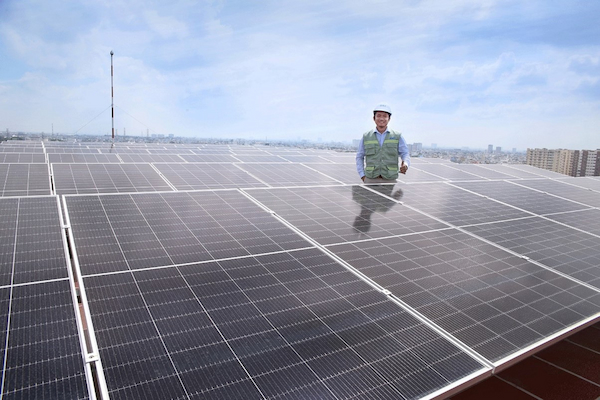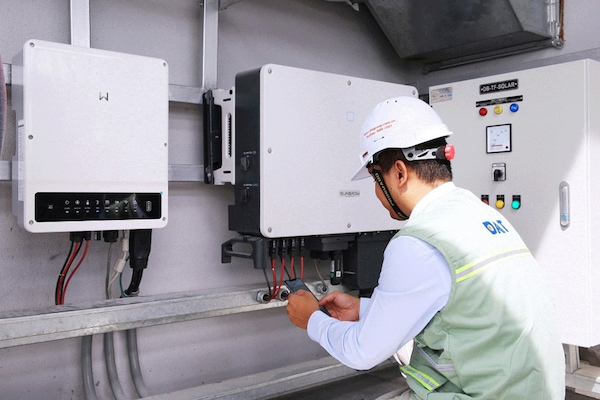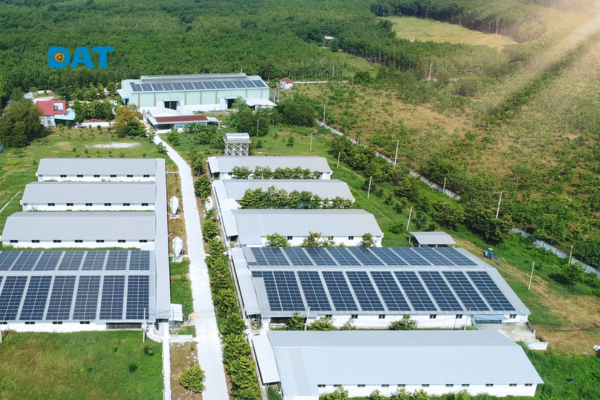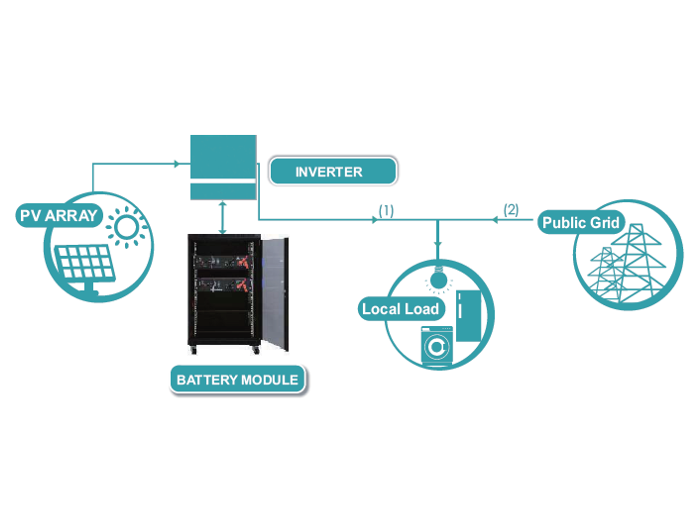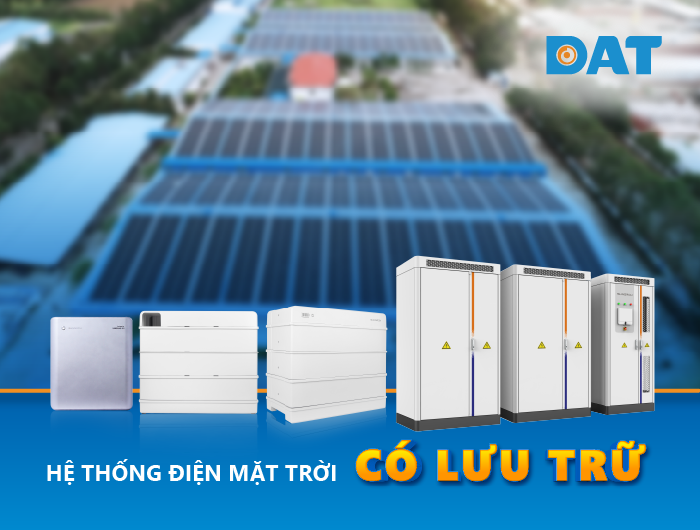Hướng dẫn lắp đặt hệ thống Hybrid an toàn và hiệu suất cao
Hệ thống điện năng lượng mặt trời lưu trữ Hybrid là một trong những giải pháp tối ưu và hiệu quả nhất để tận dụng năng lượng mặt trời và đảm bảo nguồn cung cấp điện liên tục cho gia đình hoặc doanh nghiệp. Giải pháp Hybrid không chỉ giúp giảm hóa đơn điện, mà còn làm giảm phát thải khí nhà kính và kiến tạo một tương lai xanh bền vững.
Trong bài viết này, DAT Group sẽ hướng dẫn quy trình, các bước cách lắp đặt một hệ thống điện năng lượng mặt trời lưu trữ Hybrid. Từ việc xác định nhu cầu năng lượng, lựa chọn thiết bị phù hợp, đến cài đặt và duy trì hệ thống, chúng tôi sẽ giúp bạn hiểu rõ về phương pháp lắp đặt hiệu quả, an toàn hơn.
1. Xác định nhu cầu sử dụng điện, thiết lập cấu hình hệ thống và lựa chọn thiết bị
Để thiết kế hệ thống điện năng lượng mặt trời đáp ứng được nhu cầu sử dụng điện trong gia đình, bạn phải xác định công suất của các phụ tải đang sử dụng, thời gian các phụ tải hoạt động hàng ngày. Có thể quan sát hóa đơn điện để có cái nhìn tổng quan hơn về nhu cầu sử dụng điện hàng ngày.
Đặc biệt đối với hệ thống điện năng lượng mặt trời lưu trữ, việc xác định nhu cầu của tải ưu tiên rất quan trọng (tải ưu tiên là tải phải duy trì nguồn điện ổn định, ưu tiên được cấp điện khi có sự cố mất lưới điện), bởi vì ngõ ra cho tải ưu tiên trên Inverter có điểm giới hạn công suất tối đa, vượt ngưỡng công suất này thì Inverter có thể sẽ báo lỗi và ngừng hệ thống của bạn.
Dựa và các thông tin trên có thể tính toán và đưa ra giải pháp tốt nhất cho nhu cầu về công suất tấm pin năng lượng mặt trời, công suất Inverter cũng như dung lượng khả dụng của hệ thống lưu trữ.
Tham khảo các dòng sản phẩm Hybrid Inverter, Pin lưu trữ điện của DAT Group phân phối tại thị trường Việt Nam.
2. Lựa chọn vị trí lắp đặt hệ thống
Sau khi xác định được nhu cầu sử dụng, số lượng thiết bị lắp đặt cần lựa chọn vị trí lắp đặt các thiết bị cho phù hợp, an toàn và đúng tiêu chuẩn kỹ thuật của nhà sản xuất.
2.1. Vị trí lắp đặt Inverter
Vị trí lắp đặt Inverter rất quan trọng, đảm bảo hệ thống vận hành ổn định và an toàn cho khách hàng sử dụng. Các vị trí lắp đặt phải tuân theo các điều kiện sau đây:
+ Yêu cầu về môi trường lắp đặt
- Không lắp đặt thiết bị ở nơi gần các vật liệu dễ cháy, nổ hoặc ăn mòn.
- Không lắp đặt thiết bị ở nơi dễ chạm vào, đặc biệt là trong tầm với của trẻ em. Sẽ có nhiệt độ cao khi thiết bị hoạt động, vì vậy không nên chạm vào bề mặt thiết bị để tránh bị bỏng.
- Tránh khu vực ống nước và dây cáp được vùi trong tường khi khoan lỗ.
- Lắp đặt thiết bị ở nơi có mái che để tránh ánh nắng trực tiếp, mưa và tuyết. Dựng mái che nắng nếu cần.
- Nơi lắp đặt thiết bị phải thông thoáng để tỏa nhiệt và đủ rộng để vận hành.
- Thiết bị có cấp độ bảo vệ chống xâm nhập cao có thể được lắp đặt trong nhà hoặc ngoài trời. Nhiệt độ và độ ẩm tại nơi lắp đặt phải nằm trong phạm vi thích hợp.
- Lắp đặt thiết bị ở độ cao thuận tiện cho việc vận hành và bảo trì, kết nối điện và kiểm tra các chỉ báo và nhãn.
- Độ cao lắp đặt bộ Inverter phải thấp hơn độ cao làm việc tối đa của Inverter.
- Vị trí không gian lắp đặt phải thông thoáng, tránh ánh nắng và mưa trực tiếp. Khoảng cách từ các bề mặt thiết bị đến vật cản xung quanh đảm bảo theo hướng dẫn của nhà sản xuất.
+ Yêu cầu về giá đỡ lắp đặt
- Giá lắp đặt phải làm từ vật liệu không cháy và chống cháy.
- Lắp đặt thiết bị trên bề mặt đủ chắc chắn để chịu được trọng lượng của bộ Inverter.
- Không lắp đặt sản phẩm trên giá đỡ có cách âm kém để tránh tiếng ồn được tạo ra do sản phẩm hoạt động, có thể gây khó chịu cho cư dân gần đó.
+ Yêu cầu về góc lắp đặt
- Lắp đặt bộ Inverter theo phương thẳng đứng hoặc nghiêng về phía sau tối đa là 15 độ.
- Không lắp đặt bộ biến tần ngược, nghiêng về phía trước, nghiêng về phía sau hoặc theo chiều ngang.
2.2. Vị trí lắp đặt Battery
- Khu vực hoàn toàn chống nước.
- Sàn phẳng và bằng phẳng.
- Không có các vật liệu dễ cháy hoặc nổ.
- Nhiệt độ môi trường nằm trong khoảng từ 0°C đến 50°C.
- Nhiệt độ và độ ẩm được duy trì ở mức ổn định.
- Không có yêu cầu thông gió bắt buộc cho mô đun pin, nhưng vui lòng tránh lắp đặt trong khu vực hẹp. Sự thông gió cần tránh xa khỏi nơi có độ mặn cao, độ ẩm cao hoặc nhiệt độ cao.
- Có ít bụi và bẩn trong khu vực.
- Khoảng cách từ nguồn nhiệt ít nhất là 2m.
- Khoảng cách từ lỗ thoát khí của bộ Inverter ít nhất là 0.5 mét.
- Không che kín hoặc bọc vỏ pin hoặc tủ.
- Không đặt ở nơi trẻ em hoặc thú cưng có thể tiếp xúc được.
- Khu vực lắp đặt cần tránh tiếp xúc trực tiếp với ánh nắng mặt trời.
CẢNH BÁO:
Nếu nhiệt độ môi trường vượt ngoài phạm vi hoạt động, bộ pin sẽ ngừng hoạt động để bảo vệ chính nó. Phạm vi nhiệt độ tối ưu để bộ pin hoạt động là từ 0°C đến 50°C. Tiếp xúc thường xuyên với nhiệt độ cực đoan có thể làm suy giảm hiệu suất và tuổi thọ của bộ pin.
2.3. Vị trí lắp đặt tấm pin năng lượng mặt trời
Lựa chọn vị trí lắp đặt và lắp đặt tấm pin năng lượng mặt trời là một yếu tố quan trọng để đảm bảo hiệu suất tối đa của hệ thống điện năng lượng mặt trời, có thể tham khảo chi tiết tại bài viết Hướng dẫn lắp đặt tấm pin năng lượng mặt trời.
3. An toàn thi công lắp đặt hệ thống điện năng lượng mặt trời lưu trữ
- Trước khi lắp đặt, hãy đọc kỹ hướng dẫn sử dụng của thiết bị để tìm hiểu về sản phẩm và các biện pháp phòng ngừa.
- Mọi hoạt động lắp đặt phải được thực hiện bởi các kỹ thuật viên đã qua đào tạo và có hiểu biết, đã quen với các tiêu chuẩn địa phương và các quy định về an toàn.
- Sử dụng các dụng cụ cách điện và trang thiết bị bảo hộ cá nhân khi vận hành thiết bị để đảm bảo sự an toàn cá nhân. Đeo găng tay, mặc quần áo và đeo đai bảo vệ cổ tay chống tĩnh điện khi chạm vào các thiết bị điện tử để bảo vệ bộ Inverter khỏi bị hư hỏng.
- Tuân thủ nghiêm ngặt các chỉ dẫn lắp đặt, vận hành và cấu hình có hướng dẫn sử dụng thiết bị.
Trước khi tiến hành lắp đặt hệ thống cần lưu ý một số an toàn thiết bị như sau:
3.1. An toàn lắp đặt chuỗi tấm pin
| NGUY HIỂM |
|
| CẢNH BÁO |
|
3.2. An toàn lắp đặt bộ Inverter
| CẢNH BÁO |
|
3.3. An toàn lắp đặt pin lưu trữ
| CẢNH BÁO |
|
4. Sơ đồ lắp nguyên lý hệ thống điện năng lượng mặt trời lưu trữ
Dựa vào nhu cầu sử dụng, mặt bằng lắp đặt các thiết bị đã lựa chọn, hệ thống hạ tầng điện hiện hữu của tòa nhà mà đơn vị lắp đặt lên phương án thiết kế, sơ đồ kết nối, phân tách các nhóm tải ưu tiên để tiến hành thi công lắp đặt.
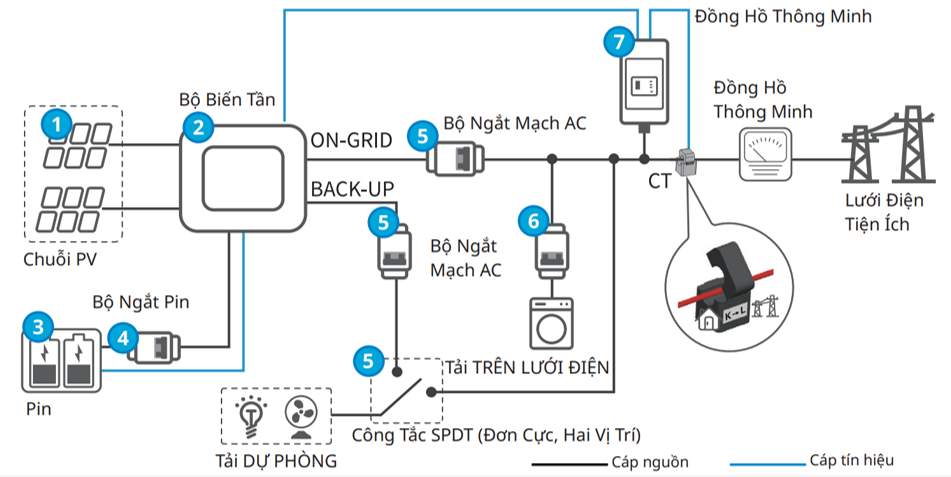
| 01 | Chuỗi pin NLMT | 05 | Thiết bị đóng cắt ngõ Backup |
| 02 | Inverter | 06 | Relay SPDT |
| 03 | Battery | 07 | Thiết bị đóng cắt phía tải |
| 04 | Thiết bị đóng cắt phía ngõ Lưới | 08 | Smart metter |
5. Lắp đặt hệ thống
Dựa theo Hướng dẫn lắp đặt cụ thể của từng model tấm pin, Inverter và battery mà đơn vị thi công lắp đặt tiến hành lắp đặt đúng theo hướng dẫn và yêu cầu của nhà sản xuất để đảm bảo an toàn thiết bị, tính vận hành ổn định của hệ thống và đảm bảo các thiết bị được bảo hành theo chính sách của nhà sản xuất.
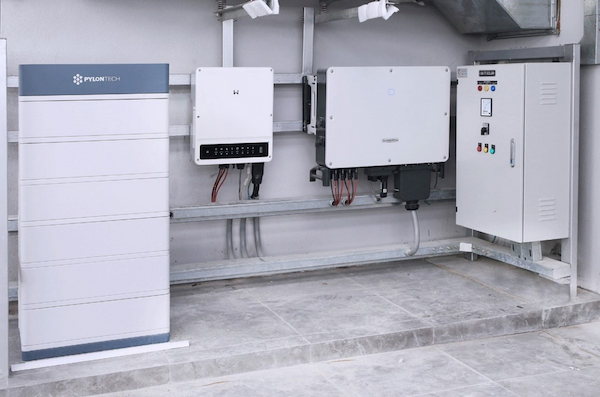
5.1 Vận hành thử thiết bị
Trước khi tiến hành vận hành chạy thử thiết bị cần kiểm tra các hạng mục sau:
| STT | Mục kiểm tra |
| 1 | Sản phẩm được lắp đặt chắc chắn ở nơi sạch sẽ, thông thoáng và dễ vận hành. |
| 2 | PE, đầu vào DC, đầu ra AC và các cáp giao tiếp được kết nối chính xác và chắc chắn. |
| 3 | Các dây buộc cáp còn nguyên vẹn, được định tuyến đúng cách và đồng đều. |
| 4 | Lỗ cáp không sử dụng được lắp bằng đai ốc chống thấm. |
| 5 | Lỗ luồn dây điện được bịt kín. |
| 6 | Điện áp và tần số tại điểm kết nối đáp ứng các yêu cầu kết nối lưới điện của bộ Inverter. |
Vận hành hệ thống
Bước 1: Bật MCB AC ở phía NỐI LƯỚI ĐIỆN của bộ Inverter.
Bước 2: Bật MCB AC ở phía DỰ PHÒNG của bộ Inverter.
Bước 3: Bật công tắc kết nối battery giữa bộ Inverter và battery.
Bước 4: Bật công tắc DC kết nối PV của bộ Inverter.
Bước 5: Cài đặt và theo dõi vận hành hệ thống trên phần mền giám sát do hãng cung cấp
5.2. Bảo trì và theo dõi
- Việc bảo trì định kỳ cho hệ thống của bạn là điều rất quan trọng và cần thiết để giúp duy trì hiệu suất và tuổi thọ của hệ thống.
- Đảm bảo các tấm pin mặt trời được kiểm tra và vệ sinh định kỳ để tránh không bị mất sản lượng do bụi bám lâu ngày và hiệu suất giảm do dây dẫn lâu ngày bị tiếp xúc kém.
- Thường xuyên theo dõi và kiểm tra hệ thống vận hành trên hệ thống giám sát, phát hiện sự cố và kịp thời xử lý tránh mất sản lượng, hư hỏng thiết bị hệ thống.
- Trước khi bảo trì sửa chữa hệ thống, lưu ý cần tắt tất cả thiết bị trên hệ thống và đợi thiết bị xả hết nguồn điện bên trong đảm bảo an toàn.
Hãy liên hệ ngay với DAT Group qua số Hotline 1800 6567 (miễn phí cước) để được tư vấn giải pháp lắp đặt hệ thống điện mặt trời lưu trữ đạt hiệu suất, sản lượng cao.



